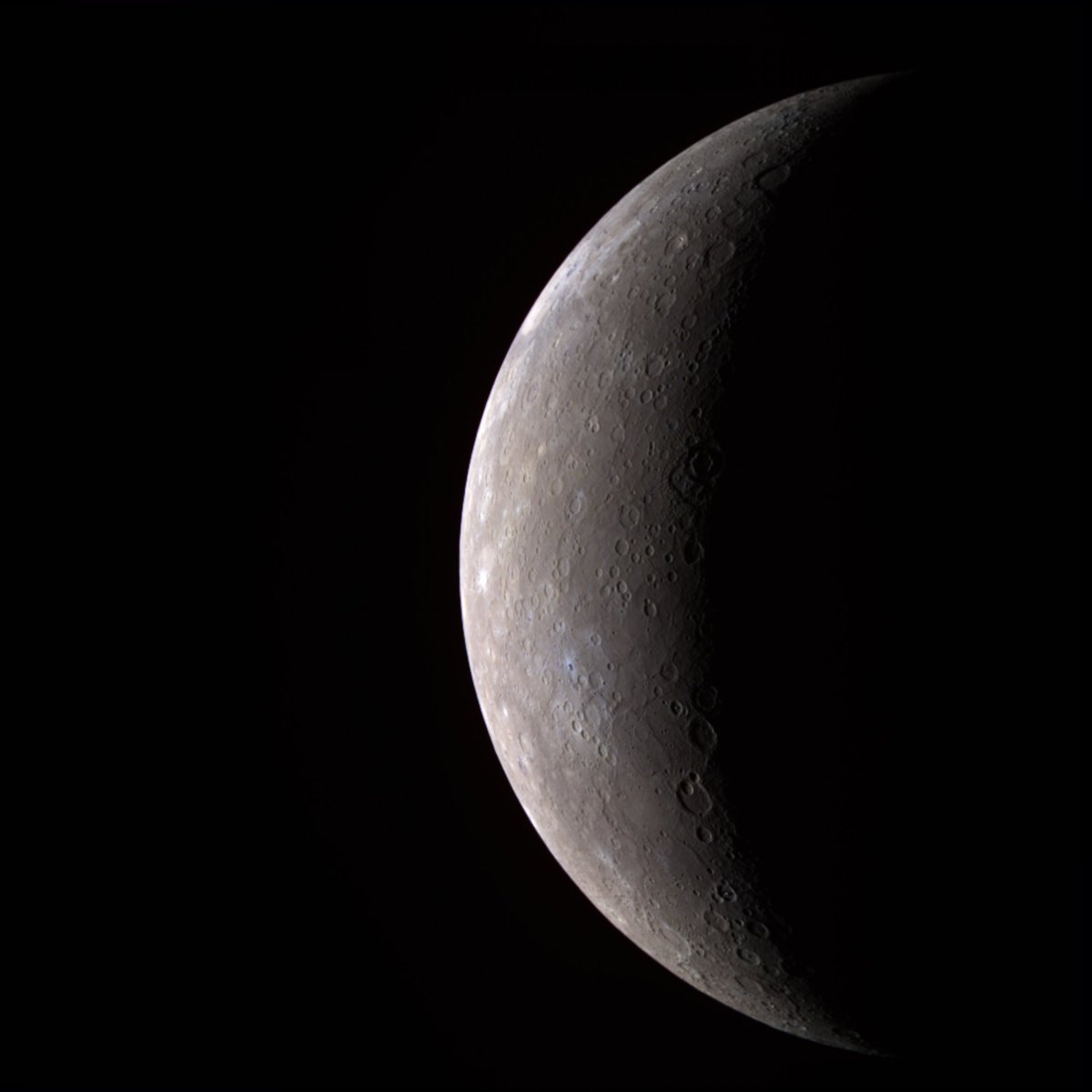Mercury is the smallest true planet in our solar system (sorry, Pluto fans)—and a new study suggests that the tiny planet's outermost layer may be even thinner than scientists had guessed.
In fact, it may be just 16 miles thick, according to a new paper published in the journal Earth and Planetary Science Letters. That's about three times the height of Mount Everest here on Earth; scientists' previous estimate held that it was about 22 miles thick.
Mercury is built kind of like a peanut M&M. Where the snack has a large center of nut coated in chocolate and then garnished with a very thin layer of candy, more than half of the planet is a dense core, coated first in a layer of rock mantle and then in a thin, light crust.
Related: Mercury is in retrograde, but what's weirder is how much this planet stumps scientists
But when it comes to precisely how thick each of those layers is, things get a little murkier: It's much harder to take a cross section of Mercury than of a peanut M&M.
Scientists have extremely detailed data from a NASA mission called Messenger that visited the planet between 2011 and 2015. But that mission only circled the planet, so scientists have to do some detective work to turn its observations into insights about what's happening beneath the planet's surface. In the case of the new paper, that meant working from a detailed map of Mercury's surface.

"We know what minerals usually form rocks, and we know what elements each of these minerals contain. We can intelligently divide all the chemical abundances into a list of minerals," author Michael Sori, a planetary scientist at the University of Arizona, said in a press release. "We know the densities of each of these minerals. We add them all up, and we get a map of density."
Then he applied the idea that in order for a planet's crust to be stable, each wedge of it has to be more or less the same total mass as the wedge next to it—so denser rock has to come in a thinner region and lighter rock in a thicker one. Otherwise, gravity would have smooshed the rock around early in its formation until that principle held. Then it's a matter of doing quite a lot of number crunching to get that 16-mile average thickness.
Sori raises a particularly intriguing possibility in the paper: that because the crust is even thinner than previously expected, it's even more likely that the mantle has broken through to the surface somewhere on the planet. That might mean scientists can get a glimpse at the next layer down without having to laboriously burrow below Mercury's surface—like an M&M with a crack in its shell.
Uncommon Knowledge
Newsweek is committed to challenging conventional wisdom and finding connections in the search for common ground.
Newsweek is committed to challenging conventional wisdom and finding connections in the search for common ground.
About the writer
Meghan Bartels is a science journalist based in New York City who covers the science happening on the surface of ... Read more
To read how Newsweek uses AI as a newsroom tool, Click here.








